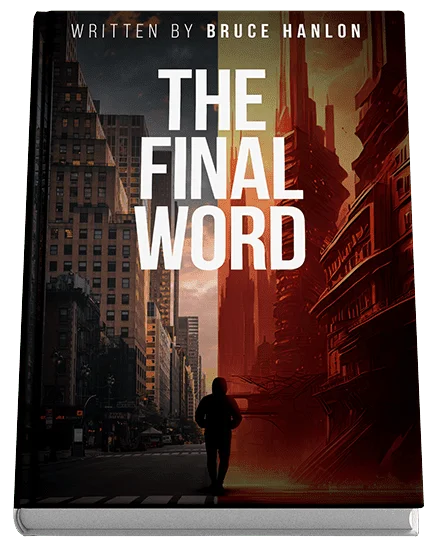One of the most important elements of crafting a compelling narrative is maintaining the proper pace. Readers won’t stay engaged if your story feels too slow or too rushed. So, what is pacing in literature? How can you incorporate it into your own writing? Let’s explore.
What Is Pacing in Literature?
Pacing is the speed at which events progress within a narrative. Effective pacing ensures the story moves at an engaging, consistent clip that maintains reader interest without ever dragging or feeling rushed. Through tactics like sentence structure, description levels, conflict introduction, and scene/chapter transitions, authors control the tempo of their works. It’s an art mastered by balancing momentum with breathing room.
10 Tips on Mastering Pacing in Literature
Here are the top 10 secrets to mastering pacing in your own writing.
1. Know When to Speed Up or Slow Down
The pace of a story should vary based on what’s happening in the plot. During climactic moments when a major conflict is reaching its height, you’ll want to speed up the pacing. Use shorter sentences and paragraphs with less description to propel the scene forward at a faster clip. This amplifies the tension and drama.
Conversely, slow down the pacing during more contemplative scenes like quiet dialogue exchanges or moments when characters are processing emotions. Take time with your description, and employ longer sentences and paragraphs to give these beats space to breathe on the page. Readers need variation in pacing to remain engaged emotionally.
2. Use Short Sentences During Fast Scenes
When you want to accelerate the pace of an action-packed scene, short punchy sentences are incredibly effective. Try stringing together a series of brief, direct sentences with minimal fluff. Convey what’s happening simply and swiftly. This mimics the brief staccato beats of a hastened heart rate.
Long, flowery sentences bog things down when you want momentum. Reserve them for more subdued moments. During high-intensity scenes, two to five-word sentences power ahead much better than lengthy run-ons.

3. Describe Only What’s Necessary
Avoid adding unnecessary visual details that don’t contribute to the plot or character development significantly. Focus only on props, settings, or appearances essential to contextualizing the scene. Give extras a lighter descriptive touch to maintain an efficient pace.
Too many unnecessary words will slacken the tempo even if they make for beautiful prose. Trust that less is more. Readers appreciate efficient storytelling that marches ahead without pointless detours. Remove indulgent fluff in revisions. Precision counts more than poetry at frantic moments.
4. Vary Paragraph Lengths Strategically
Just as sentences come in short and long, paragraphs should too. Alternate lengths strategically based on what best serves each narrative beat. During calmer scenes, longer paragraphs allow emotional complexity to unfold clearly. However, very short paragraphs, sometimes only a sentence, punch up action at climactic turning points.
Experiment with different structures to suit scenes’ tones. Long paragraphs can stall momentum, while too many ultra-short ones may feel choppy or disjointed. Change in paragraph lengths keeps readers on high alert, never sure what rhythmic style comes next.
5. Introduce Conflict Early in Scenes/Chapters
Introducing obstacles for characters to overcome is essential for any scene or chapter. Have something pressing taxing them within the first paragraph or two. Readers eagerly anticipate story developments, so reward them with a hint of forthcoming tensions quickly upon turning the page.
With no compelling stakes presented in a prompt introduction, the pacing drags as the audience questions, “What’s the point?” Front-load new sections with appealing conflicts to constantly propel narratives ahead at a brisk, assured clip.
6. Time Scene/Chapter Transitions Carefully
Jarring the reader with too abrupt scenes or chapter transitions dismantles pacing momentum. Plant subtle clues or foreshadowing near the end of each segment to ease audiences toward what’s next. This maintains a steady rhythm versus breaking it with shocking segues.
Anticipation fostered through gentle hints at upcoming developments prevents whiplash between vignettes. Tease bits without fully spoiling them so readers turn eagerly to new material. Well-timed transitions between episodes keep the page-flipping pleasure perpetual.
7. Leave Readers Wanting More with Mini-Cliffhangers
Ending with small hints or cliffhangers keeps readers excited for what’s next in the story, urging them forward eagerly for resolution. Master the art of stopping at precisely the right juncture, whether at a dramatic moment or on a subtle note of mystery, so the ensuing pause until diving back in feels not frustrating but thirst-quenching. Mini-cliffhangers throughout keep pages turning at a rapid rate.
8. Use Active Verbs Over Explanatory Ones
Active verbs like “grabbed” and “sprinted” impart a vibrant sense of action compared to static “was” or “seemed.” Narratives flow more energetically when peppered with verbs emphasizing characters performing tasks.
Overuse of abstract explanatory verbs makes prose dull. Active language brings writing to life with an urgency readers can’t resist. Upend sentences and rearrange them to favor the acting subject performing core functions over “was/were” copouts.
9. Revise Out Unneeded Details in Subsequent Drafts
First drafts tend toward excessively detailed ramblings non-essential to propelling the primary narrative forward. In revisions, identify drawn-out descriptive passages or prolonged backstories/subplots slowing momentum.
Remove wordy sections mercilessly to leave only the crucial plot/character bones. By streamlining the narrative, fast pacing absorbs audiences intensely in what remains versus boring them with padded fluff.
10. Ask Beta Readers About Pacing Weaknesses
No single author receives a story’s full scope. Have beta readers note spots seeming lackluster or too sluggish. Their input proves invaluable for strengthening any soft areas threatening to disrupt the pace.
Incorporate suggested timing/structure tweaks to produce an optimally compelling read-in-one-sitting experience. Professional and amateur critiques together yield an airtight rhythm carrying audiences breathlessly to The End.

Order your copy of “The Final Word” by Bruce Hanlon
Master these pacing principles to keep readers engrossed from start to finish. For a prime example of breathtaking pacing in action, check out Bruce Hanlon‘s sci-fi thriller “The Final Word.”
In “The Final Word,” a massive old ship crashes into a family’s home out of nowhere. As strange flashing lights are sighted outside, the father ventures out to investigate – and vanishes without a trace. What begins as a neighborhood mystery soon spirals into an unsolved puzzle that keeps readers racing through each new revelation. Order your copy today!
